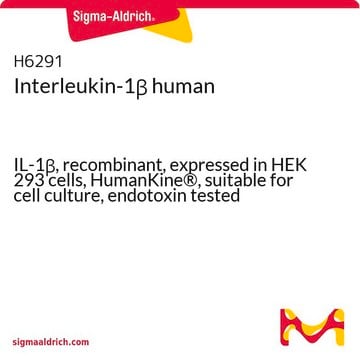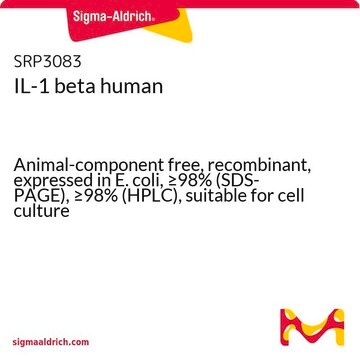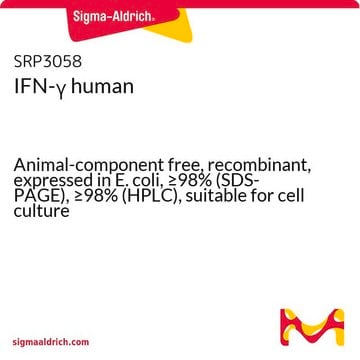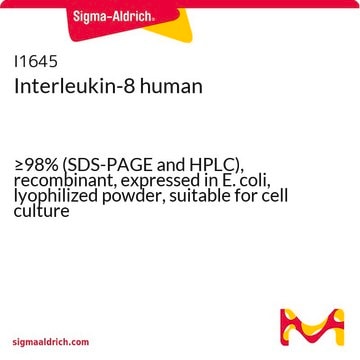SRP6169
IL-1β human
recombinant, expressed in HEK 293 cells, ≥95% (SDS-PAGE)
Synonym(s):
Catabolin, Endogenous pyrogen (EP), Leukocyte endogenous mediator (LEM), Lymphocyte-activating factor (LAF), Mononuclear cell factor (MCF)
About This Item
Recommended Products
biological source
human
recombinant
expressed in HEK 293 cells
Assay
≥95% (SDS-PAGE)
form
lyophilized
mol wt
(18 and 25 kDa, monomer, glycosylated)
packaging
pkg of 10 μg
technique(s)
cell culture | mammalian: suitable
NCBI accession no.
shipped in
dry ice
storage temp.
−70°C
Gene Information
human ... IL1B(3553)
General description
Application
- IL-1β (IL1B) has been used to check the expression of NGAL (neutrophil gelatinase-associated lipocalin) in epithelial cells after stimulation with proinflammatory cytokines.
- It has been used to check anti-inflammatory activities of N-Acetylglucosamine in human chondrocytes.
- It has been used to create inflammatory endothelium in human coronary artery endothelial cells.
Biochem/physiol Actions
Physical form
Preparation Note
Reconstitution
Storage Class Code
11 - Combustible Solids
WGK
WGK 3
Flash Point(F)
Not applicable
Flash Point(C)
Not applicable
Certificates of Analysis (COA)
Search for Certificates of Analysis (COA) by entering the products Lot/Batch Number. Lot and Batch Numbers can be found on a product’s label following the words ‘Lot’ or ‘Batch’.
Already Own This Product?
Find documentation for the products that you have recently purchased in the Document Library.
Customers Also Viewed
Our team of scientists has experience in all areas of research including Life Science, Material Science, Chemical Synthesis, Chromatography, Analytical and many others.
Contact Technical Service







